Hakata Gion Yamakasa Matsuri
Every festival in Japan is overly attractive, especially the Hakata Gion Yamakasa Matsuri. Traditions so different and distant from ours that they deserve to be lived at least once. Colors, vivacity, and spirituality are mixed in a vortex of emotions that only the Rising Sun is able to offer.
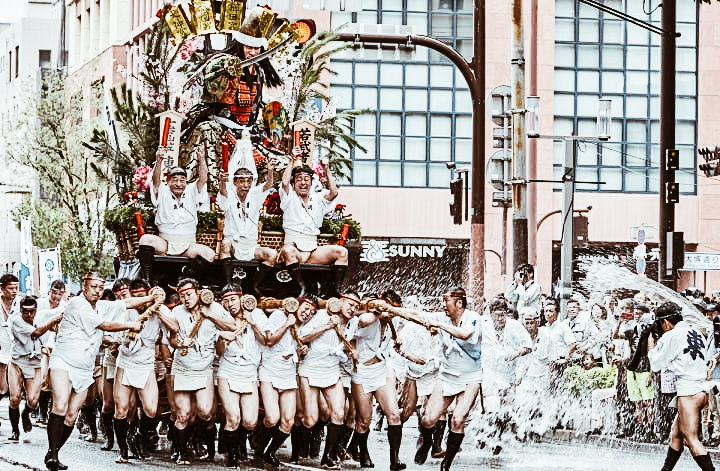
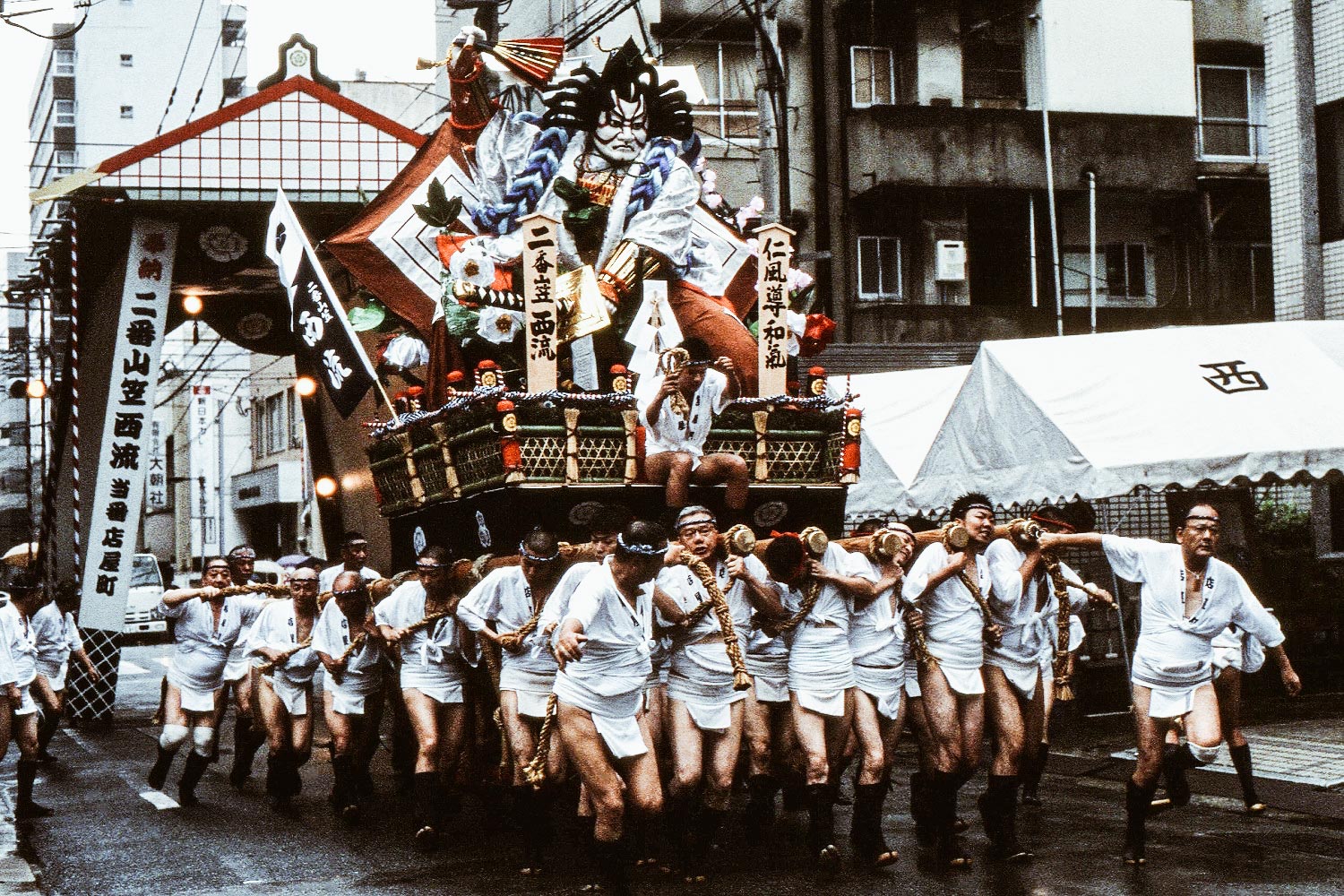
photo credits: matcha-jp.com, gaijinpot.com
The intangible cultural heritage of sacred origins
For more than 700 years, Hakata Gion Yamakasa has been celebrated in the Hakata (Fukuoka) district from 1 to 15 July. Designated as “intangible cultural heritage” by the Cultural Affairs Agency, this festival has its origins in the 13th century when a plague epidemic struck the city. The population turned to the Buddhist monk Shoichi Kokusgu to pray for the plague to end. The monk was let up on a platform and was transported throughout the city by sprinkling the streets with sacred water. At the end of the tour, the platform was thrown away and the plague disappeared completely.

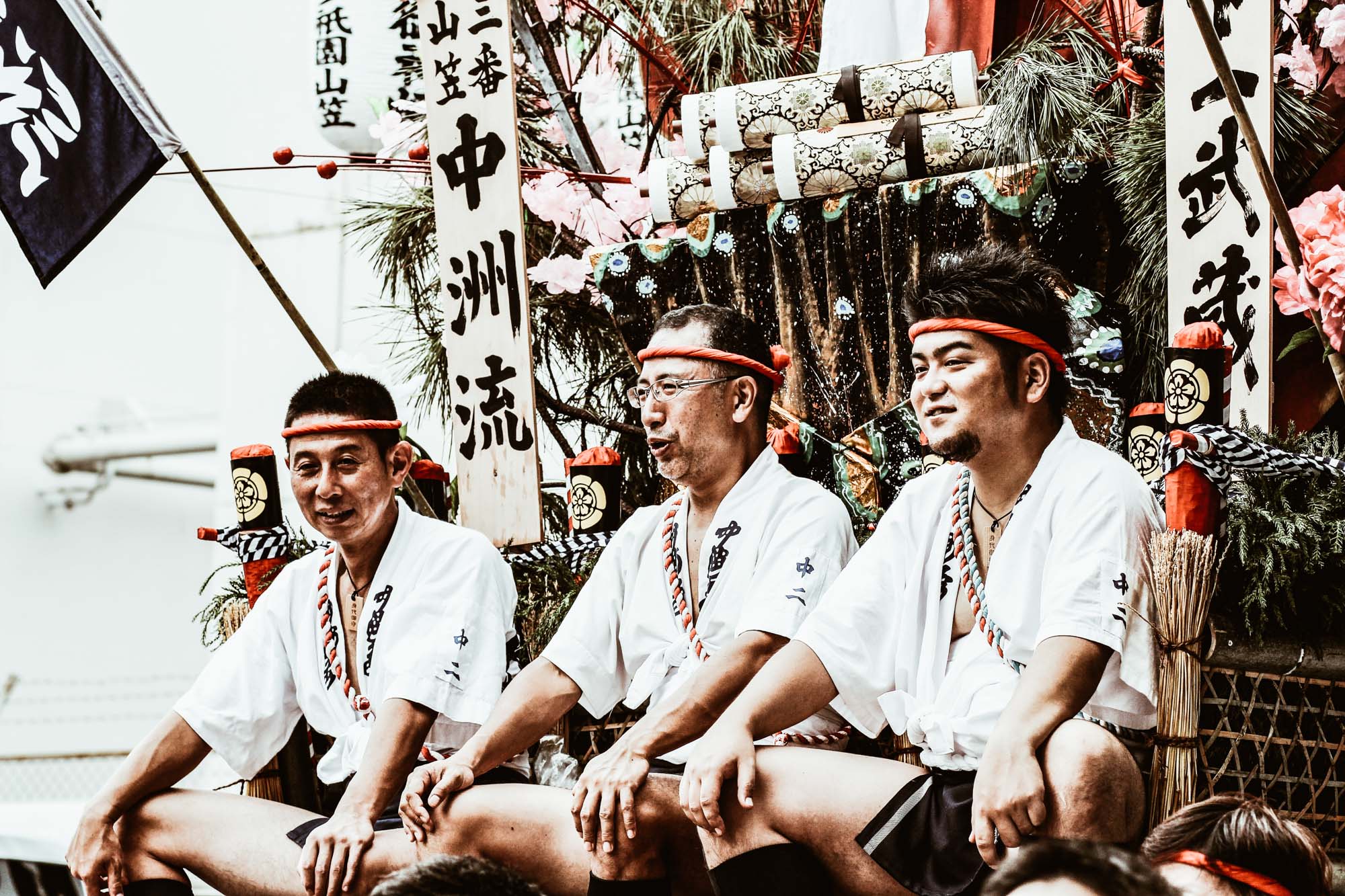
photo credits: Pascal, otsukarekun
Hakata Gion Yamakasa Matsuri: The unmissable demonstration of strength
In the period in which the festival takes place, the frenzy pervades the streets of Hakata discrict. In fact, more than one million people are preparing to attend the celebrations consisting of a chariot race!
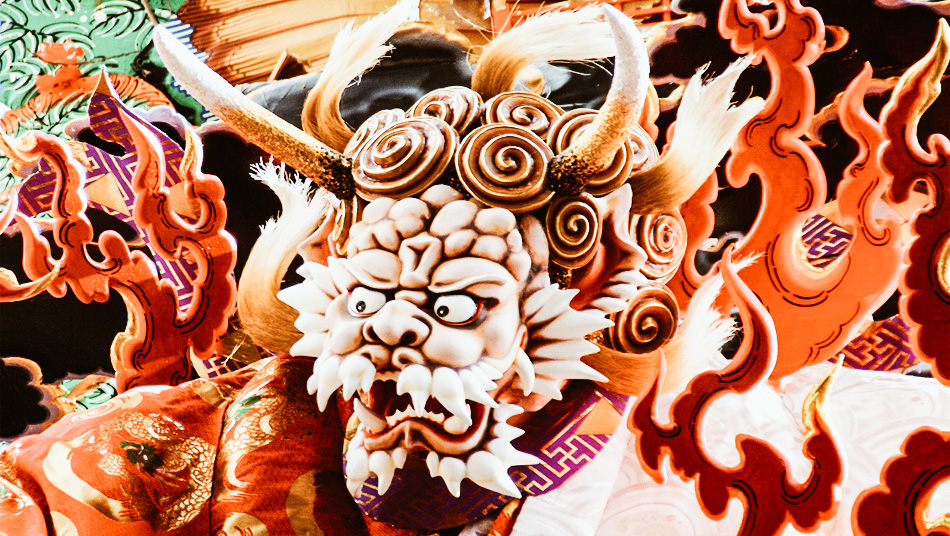
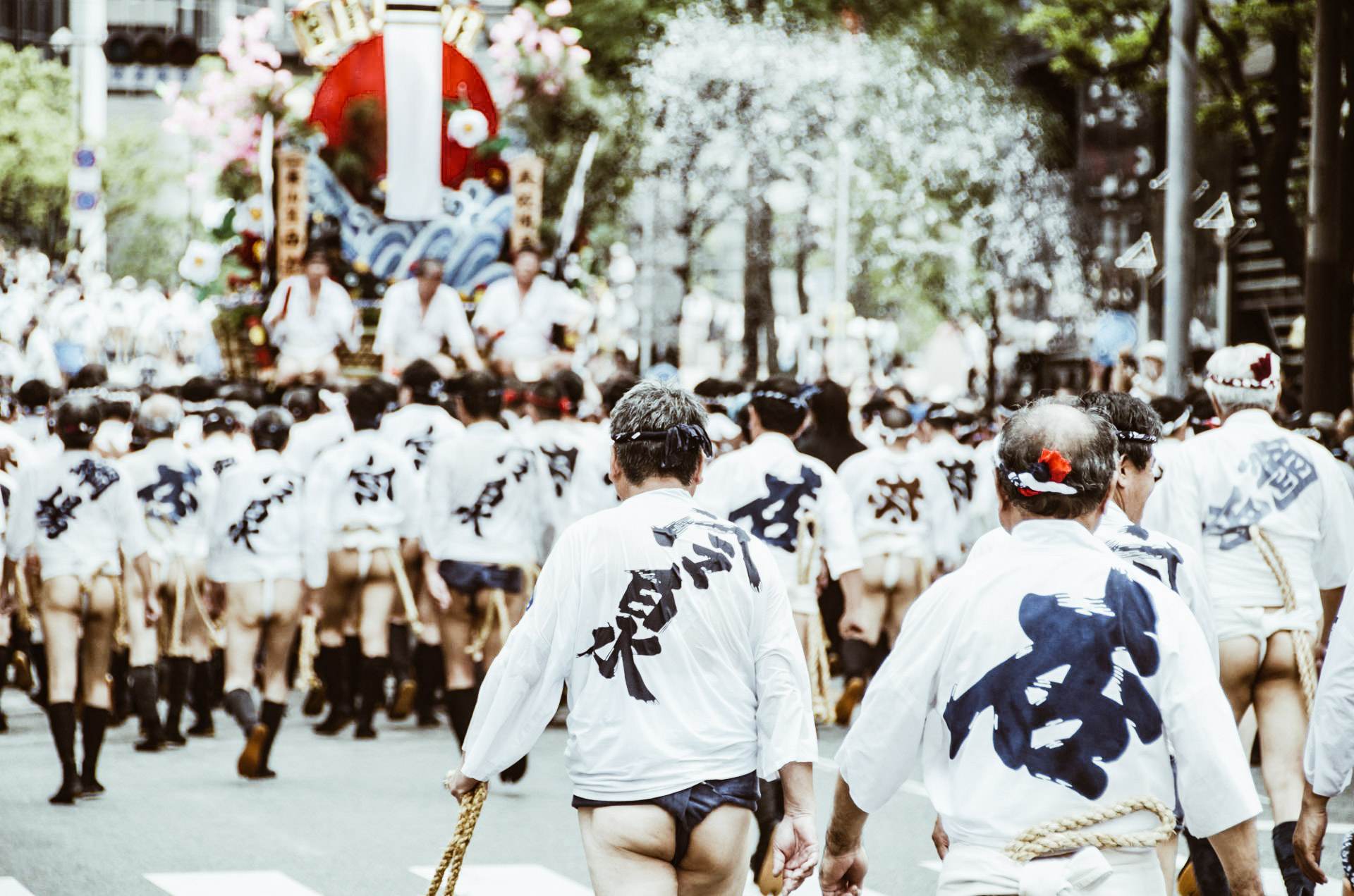
photo credits: japanbullet.com, goodlucktripjapan.com
The participants, who in this case are exclusively men, are organized in 7 Nagare (teams): Daikoku, Higashi, Nakasu, Nishi, Chiyo, Ebisu and Doi. On 1 and 2 July, each district carries its own richly decorated cart, the Kazariyama, which remains on display for a week. Thus the Oshioitori is celebrated, that is the purification of the members of the 7 Nagare. After the prayer, these teams then move from the Kushida temple and go to Hakozakihama beach. Here they take sand to applaud the setting sun. Each of them wears a Mizuhappi (a short jacket), a Shimekomi (the loincloth) and a Tenugui (a band on the head that changes color according to the role played).

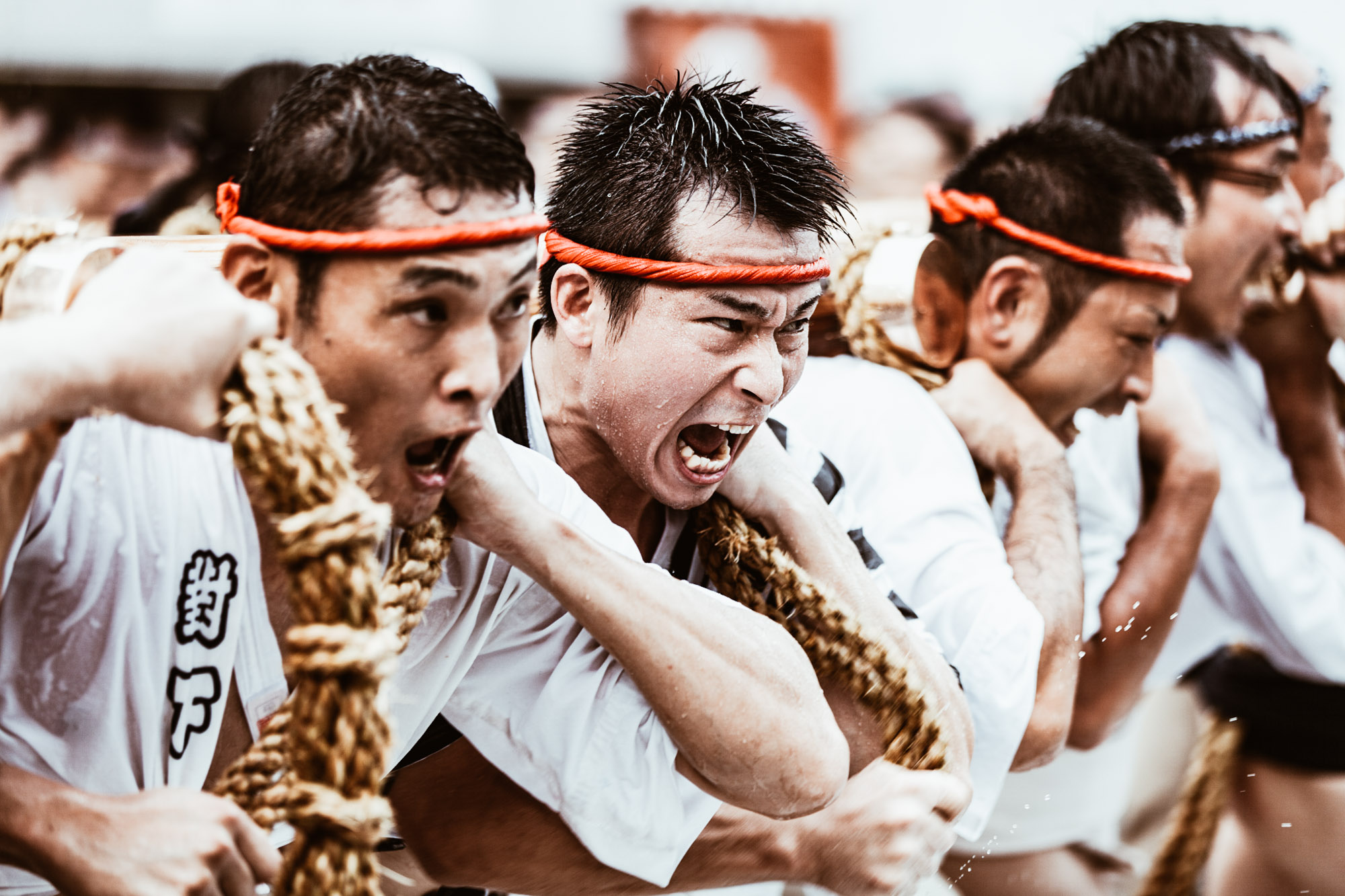
photo credits: shin7d
Training for the Hakata Gion Yamakasa Matsuri
Consisting of a race with wagons in which the winner will be those who have traveled 5 km in the shortest possible time, the participants must be ready for the grand finale. It begins with the Nagaregaki, the moment in which each team raises its wagon for the first time along the streets of its own district.
The next day is the time of the Asayama and the Tanagaregaki: the elderly receive the respect of the youngest and are able to sit on the Kazariyama transported in the opponents’ neighborhoods.
The next day it is still the turn of the Oiyama-Narashi which starts precisely at 3.59 pm. This is a sort of general rehearsal in which the race is timed, thus increasing the tension and the spirit of competition that now begins to meander through the Nagare.
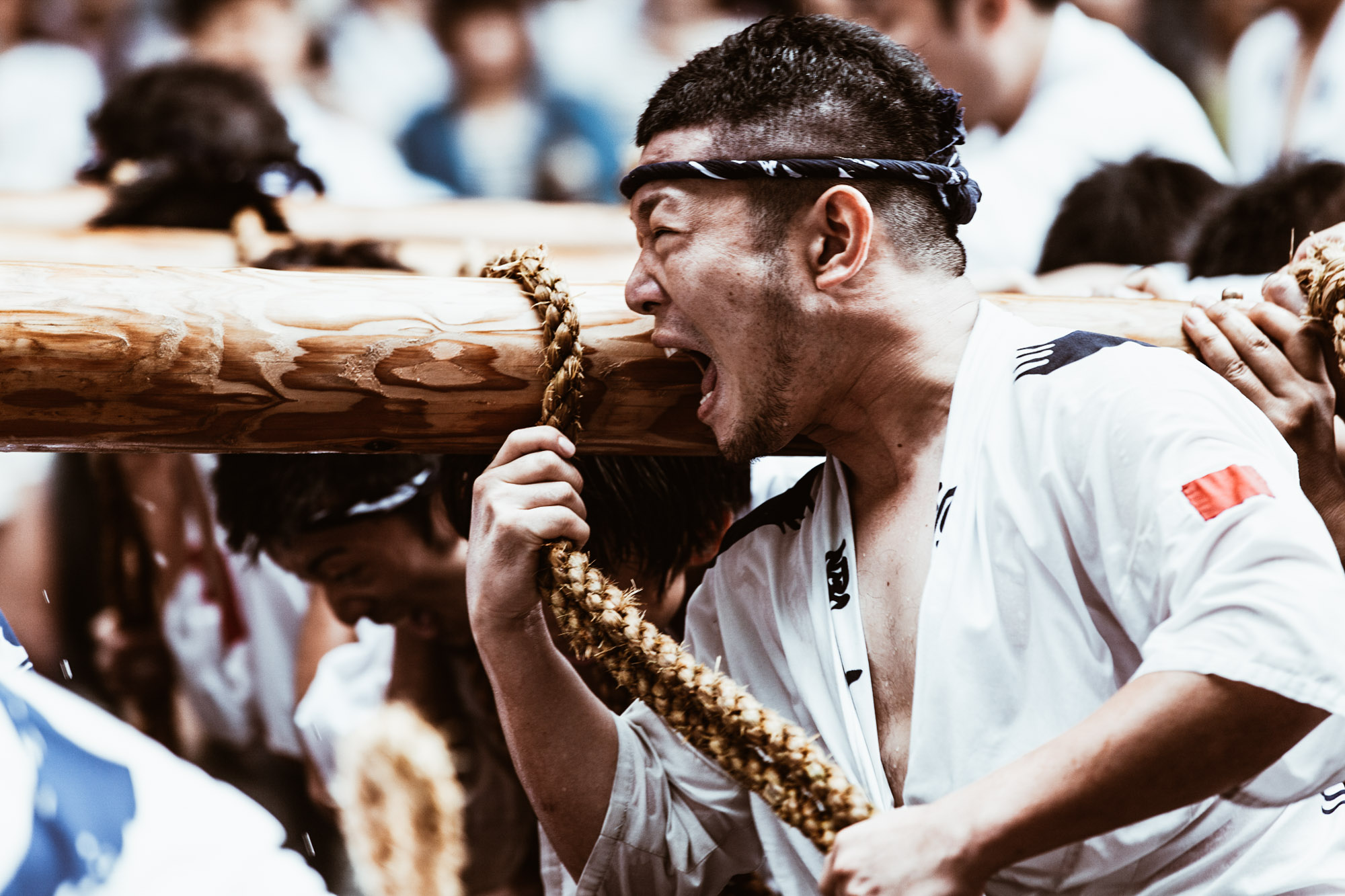
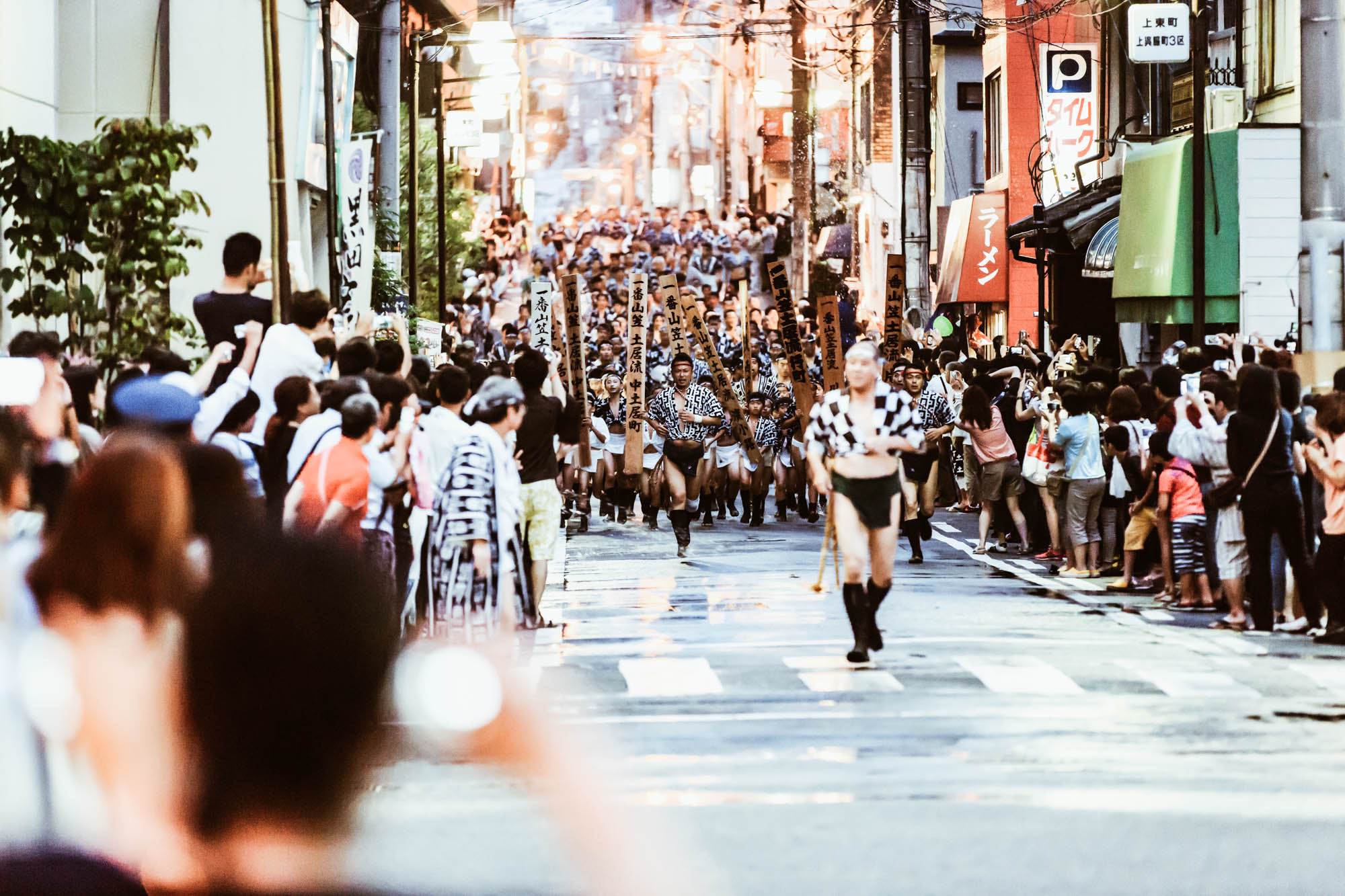
photo credits: shin7d, tak_orange
The last 3 days are the most challenging. During Shudan Yamamise the Kazariyama crosses the Naka river entering Fukuoka. During this event, the mayor and city personalities take a 1.2 km ride on the wagon. The penultimate day is that of Nagaregaki, the last training. Finally, on July 15th at 4.59 am Kushida-iri begins. The first wagon fires fast, followed by the second after 6 minutes and all the others every 5 minutes. The 5 km run will decide the winning team.
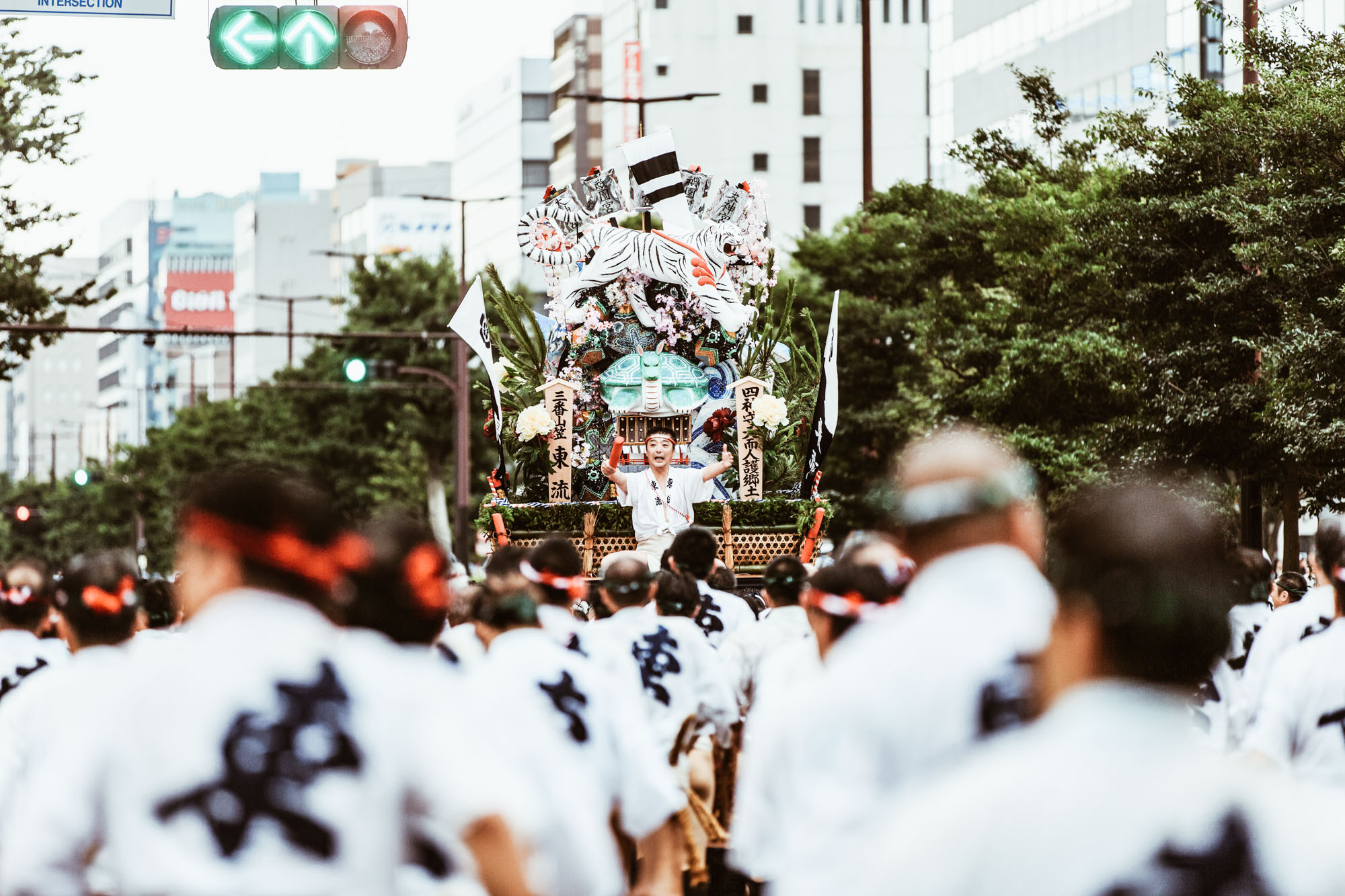

photo credits: tak_orange
Reach Hakata
The festival takes place in the Hakata district of Fukuoka. Kushida Shrine is a five-minute walk from Canal City Hakata or Gion Subway Station. Alternatively, you can reach Hakata station within a 15-20 minute walk. It is convenient to walk 10 minutes from JR Hakata station to the Kushida Shrine. Or you can get there with the Kûkô-sen subway line, get off at “Nakasu Kawabata” station and walk for 5 minutes.
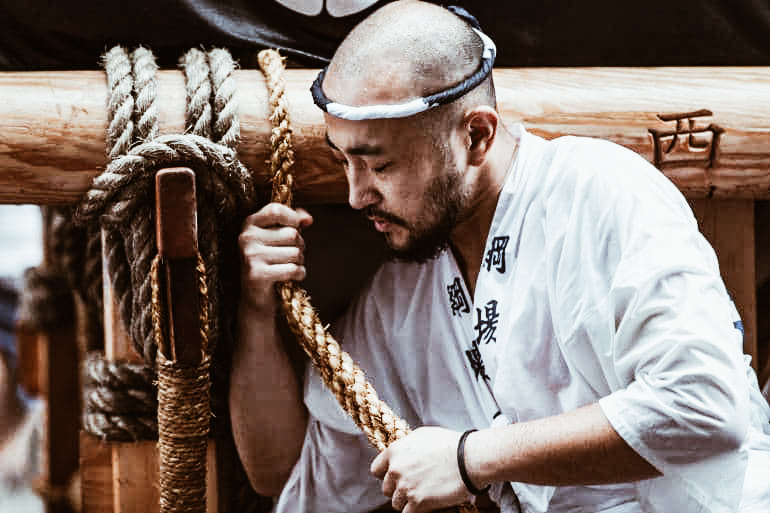
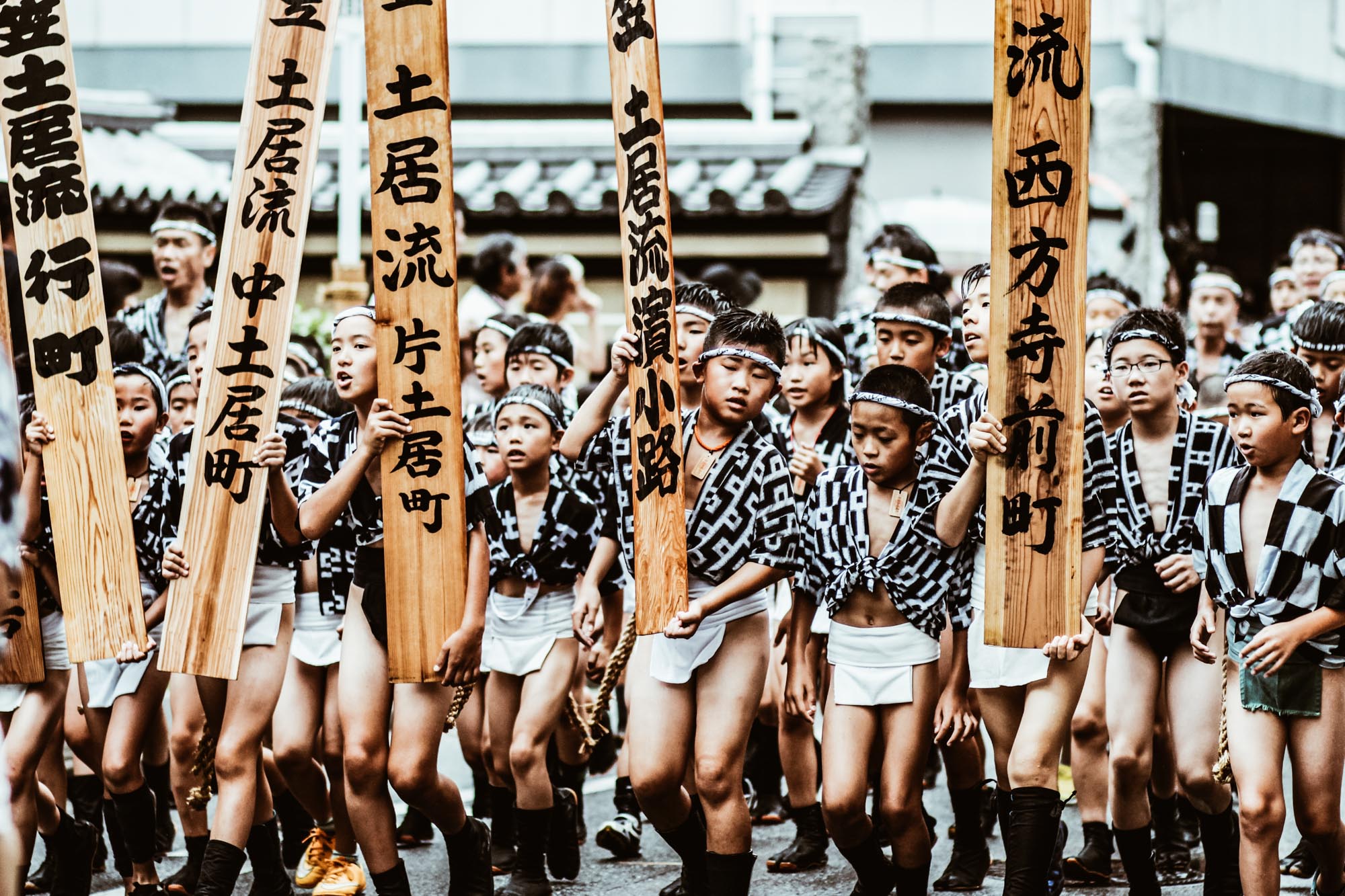
photo credits: japancheapo.com, otsukarekun
Share this:
- Click to share on Facebook (Opens in new window)
- Click to share on Twitter (Opens in new window)
- Click to share on Tumblr (Opens in new window)
- Click to share on Pinterest (Opens in new window)
- Click to share on Telegram (Opens in new window)
- Click to share on WhatsApp (Opens in new window)
- Click to share on Reddit (Opens in new window)
- Click to print (Opens in new window)






